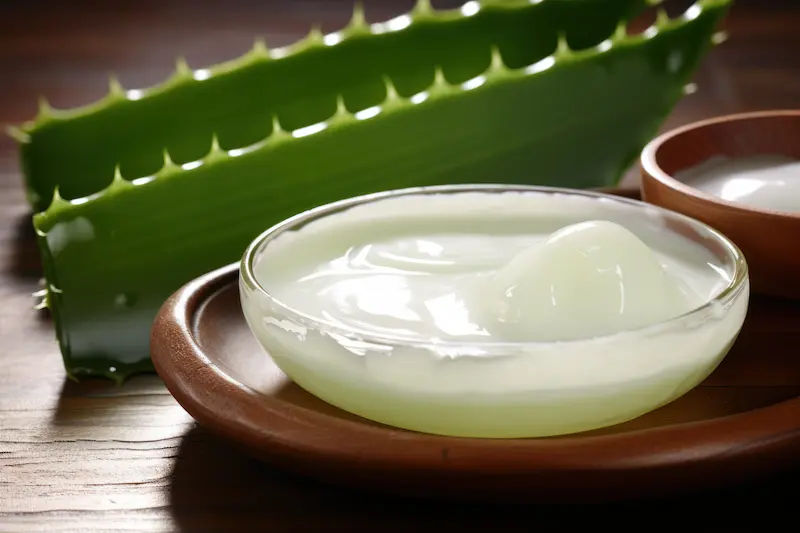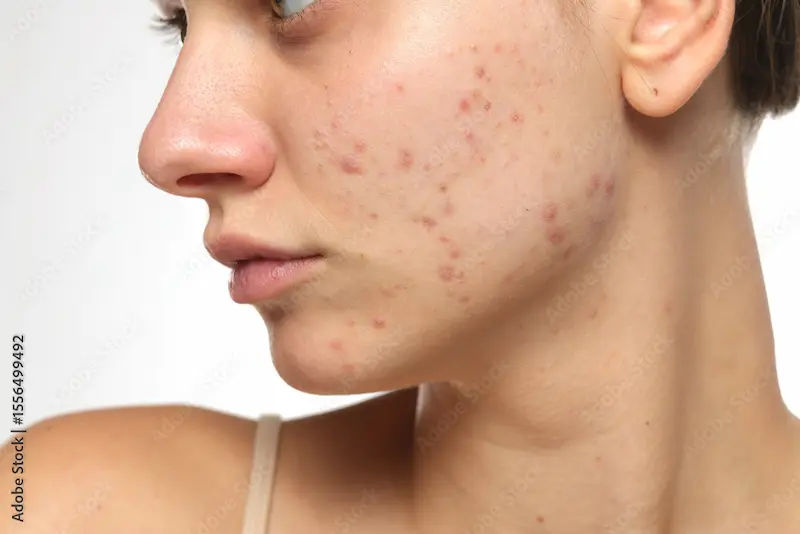Natural Home Remedies to Remove Facial Hair Safely
Safe, science-informed natural remedies for facial hair removal at home. Learn gentle methods, aftercare, and when to see a doctor.

Written by Dr. Mohammed Kamran
Reviewed by Dr. Rohinipriyanka Pondugula MBBS
Last updated on 24th Nov, 2025

Introduction: Why this topic matters
Many people look for gentle ways to manage facial hair at home. If you prefer simple, low-cost approaches first, it is natural to wonder which natural remedies actually help and how to do facial hair removal safely. This guide explains what works, what does not, and how to avoid irritation or infection. You will also learn when to check in with a clinician, because sometimes new or fast-growing facial hair can be a sign of an underlying health condition. Throughout, the focus remains on safety, skin health, and trustworthy information.
Important note: No at-home natural remedies permanently remove hair. Some methods can remove hair temporarily, and others may make hair less noticeable. Long-term reduction typically requires options such as laser hair removal or prescription creams guided by a healthcare professional.Consult a Top General Practitioner for Personalised Advice
Is Facial Hair Normal? What can Cause More Hair?
Light facial hair is normal for people of all genders. If you notice thicker, darker hair that is new or increasing, you might be experiencing hirsutism, which involves excess coarse hair growth in areas such as the chin, upper lip, chest, or belly in people assigned female at birth.
Common contributors include:
Genetics: Hair patterns often run in families.
- Hormones: Polycystic ovary syndrome (PCOS) is a frequent cause of hirsutism. Other hormone changes or disorders can contribute.
- Medications: Some drugs, such as certain hormones, anabolic steroids, and minoxidil, can stimulate hair growth.
- Life stages: Puberty, pregnancy, and menopause can shift hair patterns.
See a healthcare professional if you notice:
- Sudden, rapid, or severe facial hair growth
- Irregular periods, acne, weight gain, or scalp hair thinning
- A deeper voice or increased muscle mass
- New facial hair plus signs of insulin resistance, such as skin tags or darkened skin around the neck or armpits
A clinician can evaluate for conditions such as PCOS or other endocrine issues and discuss the most effective treatment plan for you.
Safety first: Patch tests, Hygiene, and Skin Prep
Before trying any new product or natural mixture on your face, a patch test, hygiene and skin prep should be done. Follow the guide below:
- Patch test: Apply a small amount to the inner forearm for 24 hours. If you get burning, rash, or itching, avoid using it on your face.
- Clean tools and hands: Wash hands and clean tweezers, threads, or sugaring tools with alcohol to reduce infection risk.
- Prep skin: Cleanse with a mild, fragrance-free cleanser. Avoid exfoliating or retinoids for 24 to 48 hours before and after hair removal to reduce irritation.
- Be gentle: If it stings or burns, stop immediately and rinse with cool water.
Natural Home Methods For Hair Removal
These options use physical techniques rather than chemicals and can be considered natural because they do not rely on synthetic depilatories. They are good for temporary facial hair removal and, when done correctly, are generally safe.
1) Tweezing
Best for: Occasional chin or upper lip hairs, shaping brows.
How to do it safely:
- Disinfect tweezers with rubbing alcohol.
- Soften skin with a warm compress.
- Hold skin taut and pull hairs in the direction of growth.
- Aftercare: Apply a cool compress and a fragrance-free moisturiser.
Pros: Precise, inexpensive, ideal for a few hairs.
Cons: Time-consuming for larger areas and may lead to ingrown hairs if the hairs break.
2) Threading
Best for: Upper lip, cheeks, sideburns, brows.
How it works:
A twisted cotton thread is rolled over the skin to lift hairs from the follicle.
Safety tips:
- Seek an experienced practitioner if you are new to threading; at-home threading requires skill to avoid pinching skin.
- Clean skin and thread; avoid the method if you have active acne or eczema in the area.
Pros: No chemicals and quick for fine to moderate hair.
Cons: Can be uncomfortable and may irritate sensitive skin.
3) Shaving (mechanical, not chemical)
Best for: Fine, widespread facial hair and quick touch-ups.
How to do it gently:
- Use a clean, sharp facial razor or dermaplaning tool intended for the face.
- Shave with light pressure in the direction of hair growth on cleansed, lubricated skin using a gentle shaving cream or gel.
- Rinse the blade often and moisturise after.
Pros: Fast, inexpensive, and painless for most; safe for sensitive skin when done correctly.
Cons: Stubble returns as hair regrows, and there is a risk of nicks if rushed.
Note: Shaving does not make hair grow back thicker or darker. The blunt tip can feel stubbly as it grows out, which may create the impression of thicker hair.
4) Sugaring (sugar paste hair removal)
Best for: Upper lip, cheeks, and sideburns; ideal for those who prefer a plant-based wax alternative.
What it is:
A paste of sugar, water, and lemon juice is used to remove hair from the root.
How to use it safely:
- Consider purchasing a premade sugaring paste from a reputable brand to avoid hot sugar burns from DIY cooking.
- Clean and dry the skin completely; dust lightly with cornstarch if the skin is slightly moist.
- Apply paste against the direction of hair growth and flick off in the direction of growth.
- Work in small sections and avoid going over the same area repeatedly.
- Aftercare: Use a cool compress, apply a fragrance-free moisturiser, and avoid heat or sweat for 24 hours.
Pros: Simple ingredients and many find it gentler than waxing.
Cons: Technique takes practice and may still cause redness, folliculitis, or ingrown hairs.
Natural approaches to reduce hair appearance (limited evidence)
Some home routines can make hair less visible or keep skin smoother, but they are not proven to reduce hair growth in a lasting way. Be cautious with online claims.
Gentle exfoliation masks such as oatmeal, honey, or yoghurt
These can soften skin and help lift fine facial hairs, making skin feel smoother. They do not remove coarse hairs from the root.
How to try:
Mix finely ground oats with plain yoghurt and honey, apply for 5 to 10 minutes, then rinse. Always patch test first.
Turmeric or gram flour (besan) pastes
These may help reduce inflammation on sensitive skin. There is no strong evidence that they slow hair growth. Turmeric can stain clothing and skin and may irritate some people. Patch testing is essential.
Spearmint tea or herbal supplements
Small studies have explored spearmint tea for reducing androgen levels in people with hirsutism, but evidence is limited. Always discuss herbs or supplements with a clinician, especially if you have medical conditions or take medications.
Makeup and blurring products
These can reduce the appearance of facial hair by softening its visibility. They do not remove hair, but can make it significantly less noticeable.
Methods to Avoid or Use with Extra Caution
Some widely shared DIY tips can irritate or damage facial skin. Methods to avoid or use with caution are:
- Lemon juice, baking soda, and toothpaste: These can cause burns, stinging, and hyperpigmentation.
- Pumice stones or rough hair eraser pads: High risk of microtears, irritation, and dark marks.
- Undiluted essential oils: These may trigger allergic reactions or dermatitis.
- Raw papaya or enzyme claims: Evidence for hair-reducing effects is lacking, and enzymes can irritate skin.
- Home-brewed sugar syrups at high temperatures: High burn risk; premade pastes are safer.
When to Consider Other Safe, Effective Options?
While natural remedies are appealing, some non-natural methods are well-studied, effective, and can be used at home or with professionals. These options include:
- Over-the-counter depilatory creams: Dissolve hair on the skin surface. Always patch test and avoid if you have sensitive skin or eczema. Follow directions strictly.
- Prescription eflornithine cream: Can slow facial hair growth with consistent use and is available only through a clinician.
- Laser hair removal: Offers long-term reduction. Not natural, but very effective when performed by trained professionals.
- Electrolysis: The only recognised permanent hair removal method. Requires multiple sessions.
- Address underlying causes: For PCOS-related hirsutism, clinicians may discuss management strategies.
Aftercare: Keep skin calm and prevent bumps
No matter which facial hair removal method you choose, after care is essential, it can be done by below tips:
- Soothe: Apply a cool compress followed by a fragrance-free moisturiser.
- Protect: Use broad-spectrum sunscreen SPF 30+ daily; recently treated skin is more prone to dark marks.
- Hands off: Avoid touching, picking, or squeezing follicles.
- Preventing ingrowns: After 48 hours, gentle exfoliation once or twice weekly can help.
- Watch for infection: Small red bumps are common. If redness spreads or you notice pus or pain, seek medical care.
Conclusion
Effective facial hair removal is all about choosing the right method for your skin, hair type, and comfort level. From quick at-home techniques to professional treatments, each option has its own benefits and limitations. Consistency and proper aftercare can help prevent irritation and keep skin smooth. Always consider your skin sensitivity before choosing a method. If unsure, consulting a dermatologist ensures safer, personalised results.Consult a Top General Practitioner for Personalised Advice
Consult a Top General Practitioner for Personalised Advice
Dr. Naziya Rahim Bhatia
General Surgeon
7 Years • MBBS ,MS
Bengaluru
Apollo Clinic, Sarjapur Road, Bengaluru

Dr. Arif Ahmed
General Physician/ Internal Medicine Specialist
9 Years • MBBS, MD (Genl. Med.)
Kolkata
MCR SUPER SPECIALITY POLY CLINIC & PATHOLOGY, Kolkata

Dr Bhumika Lalwani
General Surgeon
4 Years • MBBS MS
Bengaluru
PRESTIGE SHANTHINIKETAN - SOCIETY CLINIC, Bengaluru

Dr. Bulbul Biswas
General Practitioner
35 Years • MBBS, Diploma in Maternity and child welfare
Kolkata
HERSTEL CARE CLINIC, Kolkata

Dr. Suvayan Sadhu
General Practitioner
2 Years • MBBS
Kolkata
GRD POLYCLINIC, Kolkata
Consult a Top General Practitioner for Personalised Advice
Dr. Naziya Rahim Bhatia
General Surgeon
7 Years • MBBS ,MS
Bengaluru
Apollo Clinic, Sarjapur Road, Bengaluru

Dr. Arif Ahmed
General Physician/ Internal Medicine Specialist
9 Years • MBBS, MD (Genl. Med.)
Kolkata
MCR SUPER SPECIALITY POLY CLINIC & PATHOLOGY, Kolkata

Dr Bhumika Lalwani
General Surgeon
4 Years • MBBS MS
Bengaluru
PRESTIGE SHANTHINIKETAN - SOCIETY CLINIC, Bengaluru

Dr. Bulbul Biswas
General Practitioner
35 Years • MBBS, Diploma in Maternity and child welfare
Kolkata
HERSTEL CARE CLINIC, Kolkata

Dr. Suvayan Sadhu
General Practitioner
2 Years • MBBS
Kolkata
GRD POLYCLINIC, Kolkata
More articles from Skin Care
Frequently Asked Questions
1) Do natural remedies actually remove facial hair?
Some do, some don’t. Mechanical methods like tweezing, threading, shaving, and sugaring physically remove hair and can be done with minimal ingredients. Masks or scrubs (turmeric, oats, gram flour) may soften or exfoliate skin but are not proven to reduce hair growth. There are currently no natural home remedies that permanently remove facial hair.
2) Will shaving make my facial hair grow back thicker or darker?
No. Shaving cuts the hair at the surface, creating a blunt tip that can feel stubbly as it grows out, which may look thicker but is not actually thicker or faster-growing. Using a clean, sharp razor and shaving with the grain helps minimise irritation.
3) Is sugaring safer than waxing for facial hair removal?
Many people find sugaring gentler because the paste can adhere more to hair and less to skin. However, both can cause redness, ingrown hairs, or folliculitis. Good technique, clean tools, and not reapplying over the same area help. If you’re new, consider a professional to learn proper technique, or use a premade paste to avoid hot sugar burns.
4) How can I reduce hormone-related chin hair naturally?
Addressing underlying causes is key. If you have signs of PCOS or hormonal imbalance, see a clinician. Lifestyle measures like balanced nutrition, physical activity, and weight management (if recommended for you) can support hormone health and, in some cases, improve hirsutism. Evidence for herbal remedies is limited; always talk with your healthcare professional before trying supplements. Mechanical hair removal is still the mainstay for immediate results.
5) Can teenagers try these natural remedies?
Yes—gentle options like shaving, tweezing, or threading can be safe when done correctly. Always patch test first, avoid harsh DIY chemicals, and keep tools clean. If facial hair growth is sudden, heavy, or causing distress, a healthcare visit can rule out underlying causes and discuss options.




